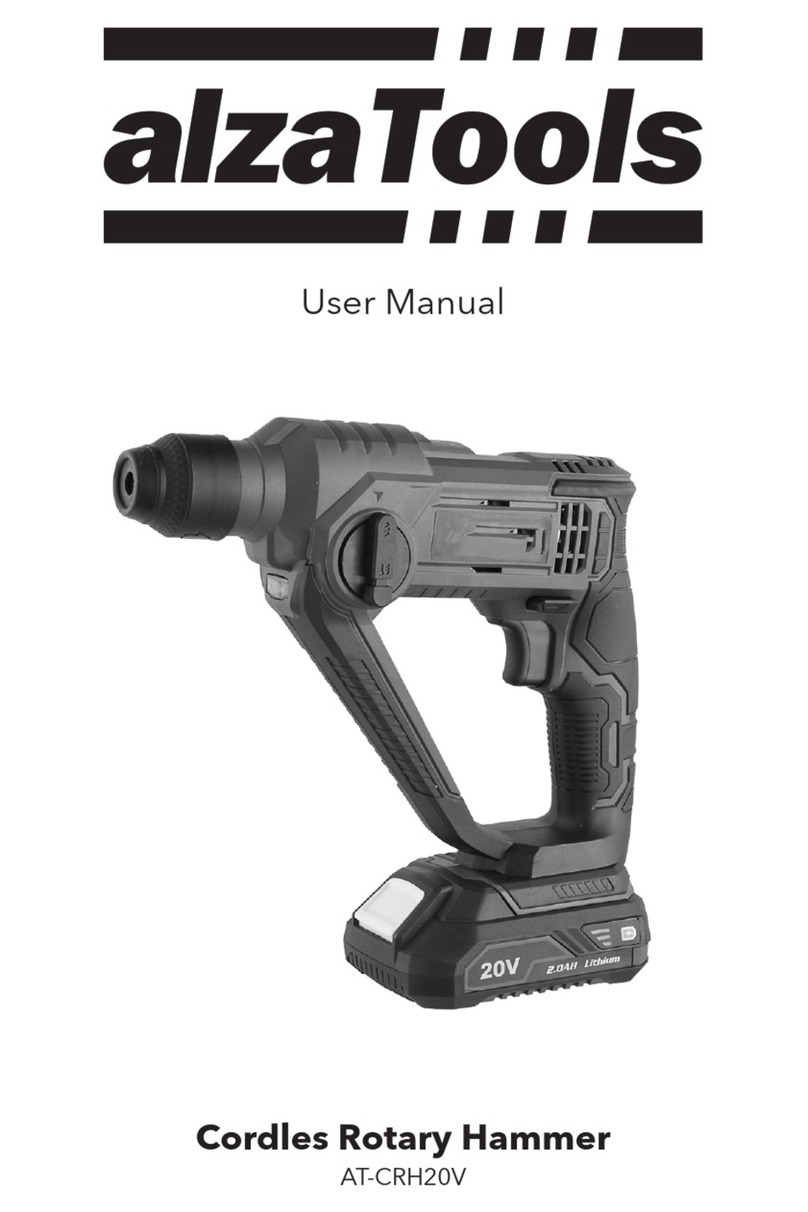
5ENGLISH
ment, a residual current device (RCD) must be
used. Using an RCD reduces the risk of electric
shock.
Safety of persons
1. When using a power tool, the operator must
be careful, pay attention to what he/she is do-
ing, and concentrate and think clearly. Power
tools must not be used if the operator is tired
or under the influence of drugs, alcohol or
medication. Momentary inattention while us-
ing a power tool can result in serious personal
injury.
2. Use personal protective equipment. Always
use eye protection. Protective equipment such
as a respirator, non-slip safety shoes, hard hat
and hearing protection, used in accordance
with the working conditions, reduces the risk
of personal injury.
3. Unintentional starting of the machine must be
avoided. Make sure that the switch is in the
off position before plugging in and/or con-
necting the battery pack, lifting or carrying
the tool. Carrying a tool with your finger on
the switch or plugging in a tool fork with the
switch on can cause injury.
4. All adjusting tools or wrenches must be re-
moved before turning on the tool. An adjust-
ing tool or wrench that remains attached to
the rotating part of the power tool may result
in personal injury.
5. The operator must only work where he/she
can safely reach. The operator must always
maintain a stable posture and balance. This
will allow better control of the power tool in
unforeseen situations.
6. Dress appropriately. Do not wear loose cloth-
ing or jewellery. The operator must make sure
that his/her hair and clothing are a sufficient
distance away from moving parts. Loose cloth-
ing, jewellery and long hair can be caught in
moving parts.
7. Where equipment is provided for connecting
dust extraction and collection facilities, care
must be taken to ensure that it is connected
and used correctly. The use of such equip-
ment can reduce hazards caused by dust.
8. The operator must not allow the routine that
results from the frequent use of the tools, to
cause them to become complacent and ig-
nore the principles of tool safety. Careless
activity can cause serious injuries in a split
second.
Use and the maintenance of power tools
1. Power tools must not be overloaded. It is es-
sential to use the correct power tool for the
work being carried out. The correct power tool
will do the work it was designed to do better
and safer.
2. Power tools that cannot be turned on and off
with the switch must not be used. Any power
tool that cannot be operated with the switch is
dangerous and must be repaired.
3. Before making any adjustments, changing ac-
cessories, or storing power tools, unplug the
power tool and/or remove the battery pack
from the power tool if it is removable. These
precautions reduce the risk of accidentally
starting the power tool.
4. Unused power tools must be stored out of the
reach of children. Persons unfamiliar with the
power tool or these instructions must not be
allowed to use the power tool. Power tools
are dangerous in the hands of inexperienced
users.
5. Power tools and accessories must be main-
tained. The adjustment of moving parts and
their mobility must be checked and attention
focused on cracks, broken parts and any other
circumstances that may jeopardize the func-
tion of the power tool. If the tool is damaged, it
must be repaired before use. Many accidents
are caused by poorly maintained power tools.
6. Cutting tools must be kept sharp and clean.
Properly maintained and sharpened cutting
tools are less likely to catch on material or jam
and are easier to control.
7. Power tools, accessories and tool bits etc.
must be used in accordance with these in-
structions and in the manner intended for the
particular power tool, taking into account the
working conditions and the work to be carried
out. Using power tools for activities other than
those for which they are designed can lead to
dangerous situations.
8. Handles and grip surfaces must be kept dry,
clean and free of grease. Slippery handles and
gripping surfaces mean the tool cannot be
held and controlled in unexpected situations.
Service
1. Power tool repairs must be carried out by
SAFETY INSTRUCTIONS




























